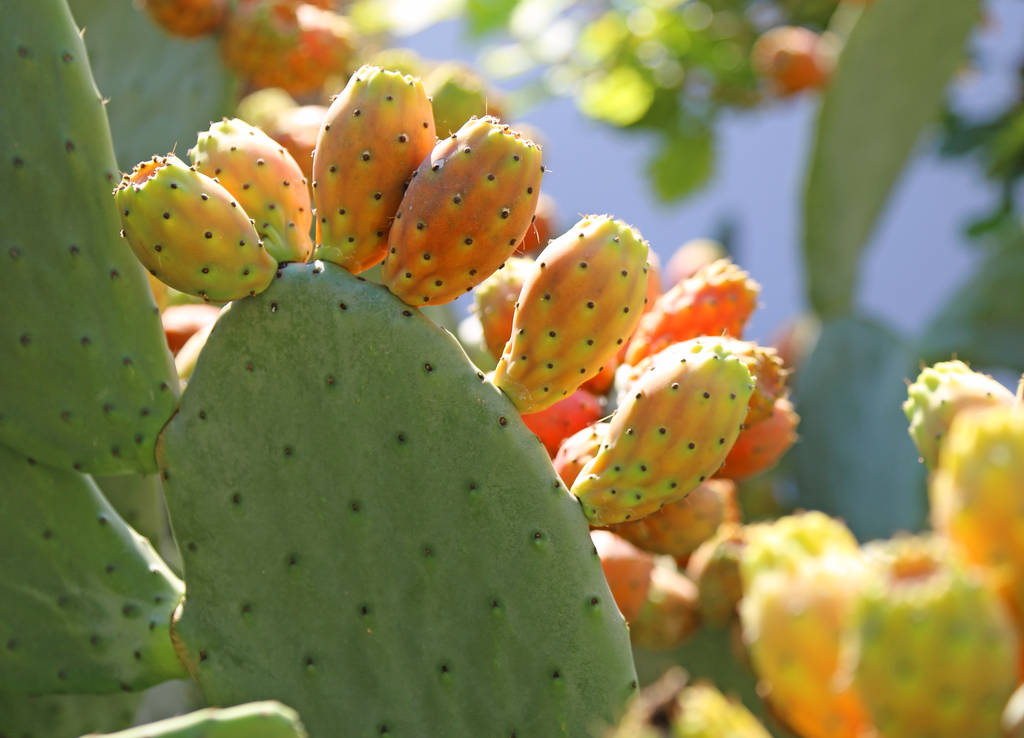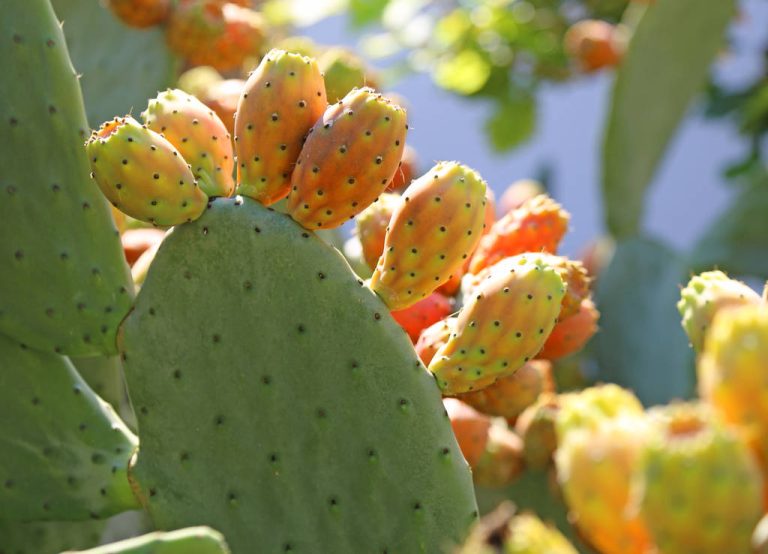Prickly pear seed oil is said to ensure beautiful skin and even lower blood sugar. But what about the promises? And what about the environmental balance of the oil?
Prickly pear seed oil is obtained from the seeds of the cactus species Opuntia ficus-indica. The plant originally comes from Mexico. It is very popular in South American cuisine: the so-called “nopales”, the cactus leaves, are traditionally served by Mexicans with various dishes such as vegetable pans and tacos. The cactus fruit itself is also edible – in English it is known as “prickly pear”. Their juice is considered a “superfood” in Mexico
There are two ways of extracting the oil from the prickly pear seeds: maceration (softening) or cold pressing. With cold-pressed prickly pear seed oil, the ingredients remain in large quantities.

Prickly pear seed oil and its ingredients
Prickly pear seed oil is rich in various healthy nutrients. It consists of 88 percent fatty acids such as omega-6 and omega-9.
Omega-6 (linoleic acid): This unsaturated fatty acid is the main component of prickly pear seed oil. It is essential for your body’s immune response.
Omega-9 (oleic acid): Oleic acid is said to have a positive effect on brain function and the cardiovascular system. Some studies suggest that the acid may help prevent breast cancer. It is not only contained in prickly pear seed oil, but also in olive oil, for example.
Prickly pear seed oil is also rich in tocopherols, which belong to the vitamin E group. Tocopherols are antioxidants and protect the body’s cells from free radicals
Prickly Pear Seed Oil: Effect on your health and beauty
Prickly pear seed oil is famous for having a positive effect on the human body, both internally and externally.
Topical use: Take two drops of the oil and either apply it to your skin without any additives or mix it with your daily skin cream for extra dry skin. Despite its rich fatty acid content, prickly pear seed oil is non-comedogenic—so it won’t clog pores. The oil is suitable for daily use.
Internal use: You can also use the prickly pear seed oil for culinary purposes and mix a few drops into your salad dressing, for example. The oil has a light fruity note. However, you should not heat it: it can lose its valuable ingredients.
Researchers have already been able to demonstrate some of the health-promoting effects that prickly pear oil is said to have – including, for example, its antioxidant effect. Other effects, on the other hand, have not yet been sufficiently proven:
Sun protection and anti-aging:
Anti-inflammatory: the so-called
Prevents cancer: As part of a study, scientists treated induced tumor cells from nude mice with prickly pear extract. They found that the tumor cells died more often as a result. The exact reason for this and whether prickly pear seed oil has the same effect on people has not yet been clearly established.
Prickly pear seed oil: What you should look out for when buying
If you want to buy prickly pear seed oil, you should always make sure that it is the cold-pressed version. Since the oil has to be made from a large quantity of fruit, it is particularly valuable and expensive. So if you come across a surprisingly cheap offer, it may be a chemically extracted product. This not only lacks important ingredients, it can even contain harmful substances. So make sure that it is not contaminated with so-called “hexane”. An organic seal is also important – this way you can also ensure the ecological quality of the oil.
But you should also keep an eye on the environmental balance of prickly pear seed oil: The biggest problem is the long transport routes. Globally, Mexico grows the most prickly pears. The second largest producer, on the other hand, is Italy (Sicily). It is therefore possible to buy prickly pear seed oil from the EU.

